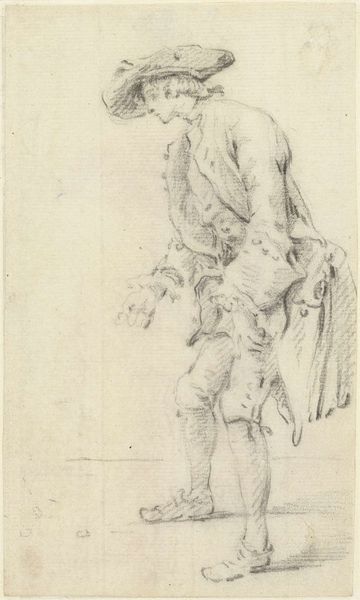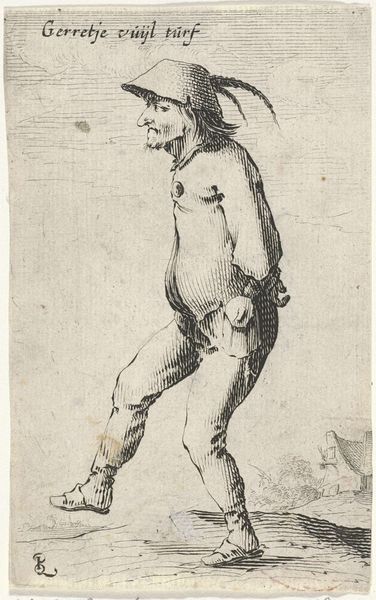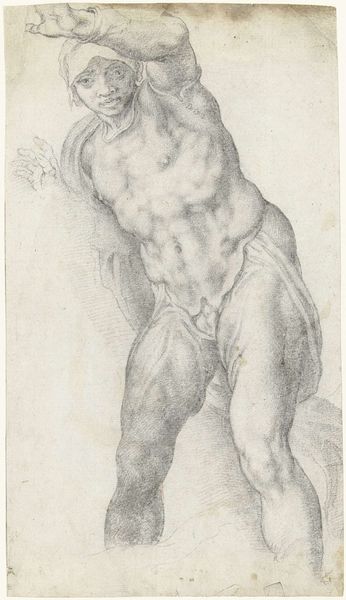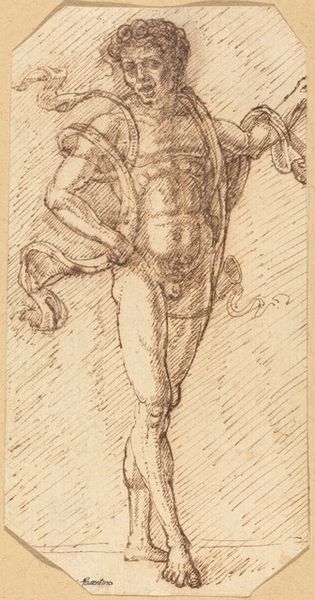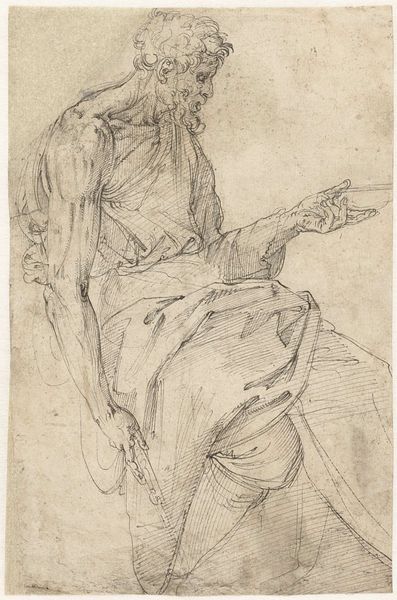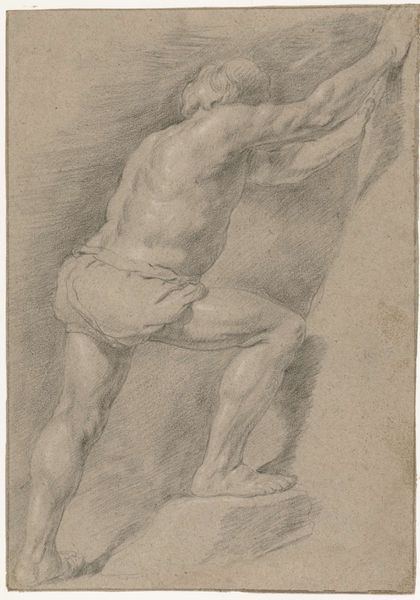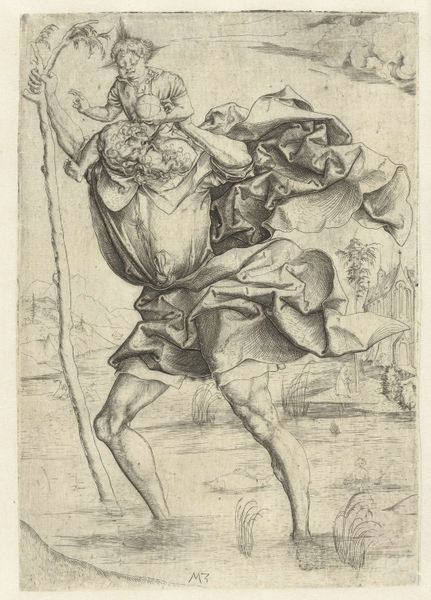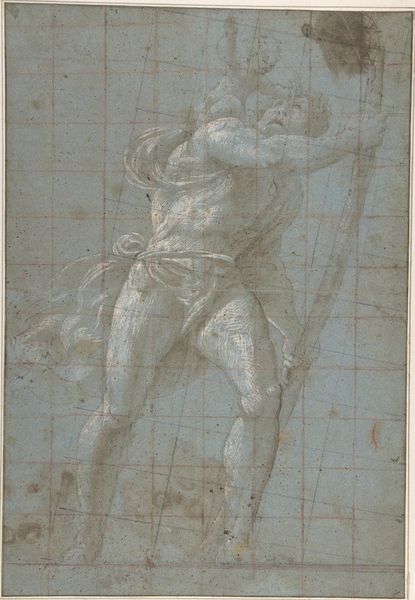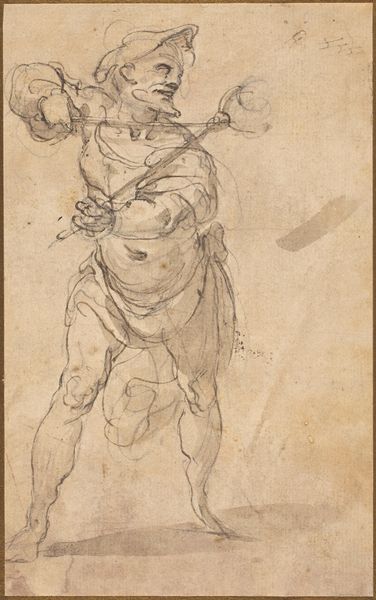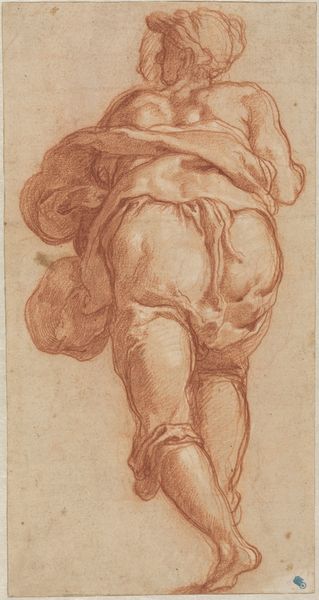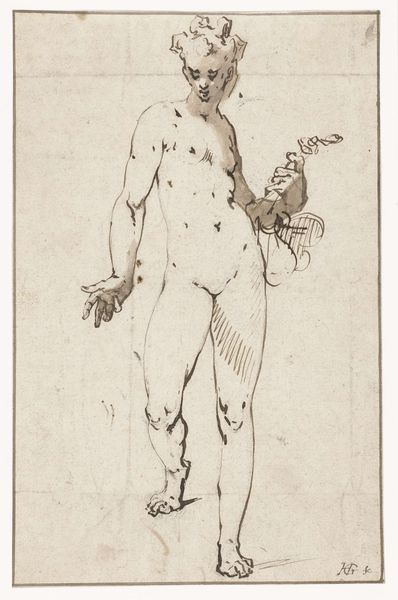
Fluitspeler met zijn rechtervoet op een helm, op de rug gezien 1508 - 1564
0:00
0:00
drawing, pencil
#
portrait
#
drawing
#
pencil sketch
#
etching
#
figuration
#
pencil
#
northern-renaissance
Dimensions: height 142 mm, width 72 mm
Copyright: Rijks Museum: Open Domain
Curator: This sketch, created by Aertgen Claesz. van Leyden between 1508 and 1564, depicts a flute player seen from behind, his right foot resting rather curiously on a helmet. Editor: There's an inherent irony here; a musician, typically associated with harmony, literally stands upon a symbol of conflict and war. Curator: Precisely. It makes one wonder about the relationship between art, power, and social commentary during the Northern Renaissance. Were images of military might something to be subverted, recontextualized through art? This figure, dominating what should represent power, disrupts such conventional understanding. Editor: It's as if Van Leyden asks us to confront the idea of dominance itself. The flute player's stance suggests triumph, yet he is almost unaware, caught up in creating music. Where lies the power: In martial prowess or in artistic expression? And how might that question be especially resonant considering who could and could not access art or learn musical practices? Curator: The sketch offers a complex tension that might reveal the public role of art, the artist's attitude towards powerful symbols, or the image he wants to build for the figure represented. We cannot simply state if this stance has rebellious intentions; it has instead more layers, something very distinctive about images produced on that age. The figure also carries a sword which can further give information about their class and the reception intended to the image. Editor: Right. And the choice of medium – a drawing – it creates an accessibility that might also be significant. The fragility of pencil sketch underscores the temporary and performative nature of triumph, that power itself may just be performative, represented here as an easily made artwork. Curator: Overall, it's a rather suggestive composition. It highlights the complexity of a society grappling with shifts in power and knowledge dissemination during the Northern Renaissance. Editor: A reminder that sometimes, the most potent statements are made when art redefines what stands where, who creates, who leads, and why.
Comments
No comments
Be the first to comment and join the conversation on the ultimate creative platform.
